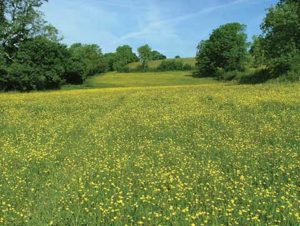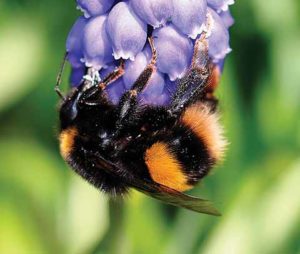Fifty years of protecting Dorset’s environment
Simon Cripps looks back half a century and ahead fifty years, too
Published in June ’18
The fifty years since Dorset Life’s progenitor, Dorset the County Magazine, was launched have been tumultuous ones for Dorset’s wildlife and its natural places. There have been some serious threats and some fabulous successes. The 1980s was a tipping point for Dorset’s natural habitats, especially heathlands. Up to then, this hugely important and internationally rare habitat was being lost at an alarming rate to housing pressure and new roads. Land at Lorton near Weymouth, Canford Heath in Poole and Parley Common in Bournemouth, for example, was threatened with destruction. The diggers were fired up and ready to roll.
It was due mainly to the work of people like Jim White at the then Nature Conservancy Council (now Natural England) and Lesley Haskins for Dorset Wildlife Trust (DWT), as well as the RSPB and Amphibian & Reptile Conservation, that the majority of the most damaging proposals were stopped. As a result of several public inquiries being lost by developers, they backed off and now heathlands are protected.
The second threat that has been only partly countered is that to the natural grasslands in West Dorset. Thirty years ago, a remnant of old England came under the auctioneer’s gavel: Kingcombe Farm at Toller Porcorum, ten miles north of and 200 years behind Bridport. It had never had modern agrichemicals applied to its meadows: no pesticides, no herbicides, little artificial fertiliser. It was a farming and countryside time-capsule of national importance. DWT and friends not only managed to launch a successful appeal to buy almost all the lots, but we were one of the first to manage the newly acquired land with a nature-friendly farm. Today this land boasts a Coronation Meadow that is one of the finest wildflower meadows in the country.
Grassland is still at grave threat though, from ploughing up to plant rye, maize or trees. Last year, thanks to a national petition run by DWT and hard work by Natural England, the threat of Rampisham Down SSSI being covered with a solar power station was averted, protecting another grassland of national importance in the same area.
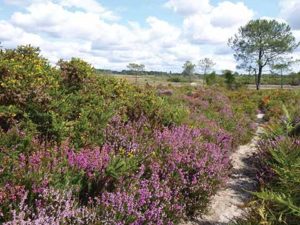
Upton Heath, one of the county’s blessings – of nationally rare heathland – that survived the great expansion of the 1970s. Credit – N Hoar
Thirdly, Dorset’s sea, stretching halfway to France, has not escaped the overfishing that has devastated the world’s oceans. Livelihoods have been destroyed and marine species and habitats degraded by overfishing for decades, although protection out to the twelve-mile fishing limit helped to maintain some natural richness and livelihoods for local fishermen. Although now far better managed, fishing still takes place at a fraction of what healthy seas could produce.
Forty years ago, DWT and partners established the voluntary Purbeck Marine Wildlife Reserve – a national trail-blazer for marine conservation. The government has since gone part of the way to establish a network of marine protected areas around the English coast, including key sites in Dorset. These sites, along with more successful fisheries management, have already been shown to help restore the health of our seas.
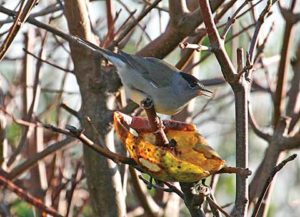
A male blackcap –a warbler also known as the northern nightingale – which is one of the birds on the RSPB’s green list of least threatened species. Credit – Ken Dolbear MBE
If the last fifty years have been a roller-coaster for nature, the next fifty look to be just as momentous. The biggest challenge and opportunity on both land and sea is Brexit. Before joining the EU, Britain was the dirty man of Europe. European environmental legislation and the protection of those laws by the European Court of Justice have gone a long way to restoring a much more healthy and pleasant environment, reducing air pollution, providing for cleaner drinking and bathing water, looking after rare species and habitats. Along with partners in the Greener UK alliance, Wildlife Trusts have been lobbying hard to ensure that when EU laws are withdrawn, they are replaced by new domestic legislation providing at least as much protection for nature and our
own health.
Fifty years ago, the threat came from intensive agriculture providing much needed food after World War 2. Conservation has many friends in the farming industry, but factors such as low food prices, aggressive agrochemical sales and perverse subsidies have resulted in damage to our countryside – from degraded soils to less wildlife such as farmland birds. The massive decline of invertebrates, including bees, is a real worry for our vital and productive ecosystems that sustain wildlife and humans alike.
Brexit offers an opportunity to manage the land so that we can restore its health, diversity of wildlife and productivity, as well as to provide a more sustainable future for the farming industry. Recent statements by Environment Minister Michael Gove and the publication of the government’s 25-year Plan for the Natural Environment give us hope that farming and wildlife can better co-exist. We need though to ensure that all the farming subsidies currently provided by the EU to the UK are targeted to achieve public benefits such as flood management, soil restoration and wildlife conservation, in a way that also benefits farmers and land-owners and restores the health of our countryside.
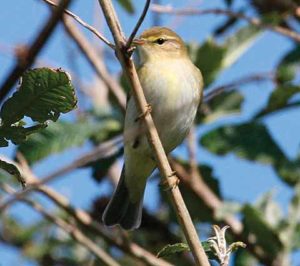
The chiffchaff is more easily identified by song (monotonous chiff, chaff, chiff, chaff) compared with the visually very similar willow warbler (a much more complex song) than by the later’s lighter legs and longer, sleeker flight wings. Credit – Ken Dolbear MBE
At sea the process post-Brexit is less clear, not least as it is currently far from clear that we will be able to control and manage what happens in our own waters.
So in fifty years’ time, what will Dorset look like? Will it be a dystopian wilderness or a Garden of Eden? Conservationists are hopeful by nature, or we wouldn’t do the job, but some things worry me. I can see Dorset being far more urban; central government housing requirements could mean an inexorable creep in the size of the conurbation of Poole and Bournemouth as well as our other towns such as Bridport, Weymouth, Sherborne, Dorchester, Blandford and Gillingham growing hugely. If that happens, we must make sure they are happy, healthy places that still provide access to nature for the well-being of residents.
I can see new species becoming common such as some butterflies making it across from the continent, birds like black-caps and chiffchaffs and mammals like beavers. We may though lose a few old friends driven out by climate change such as meadow pipits, willow tits and even bumble bees.
The biggest changes, I hope, will be in the way we manage our countryside and sea. On land we will see more wild landscapes that will not only be havens for wildlife, but have huge benefits for mankind – supporting pollinators, providing flood storage and rich soils. Farming will be done with improved technology and skills so that it can co-exist with, not fight against, nature. In order to achieve that though, we have to accept higher food prices so that farmers are adequately paid to look after our countryside, to reject the widespread destruction of wildlife, from badgers to insects, not suited to intensive agriculture, and to establish regulations that protect all of our futures.
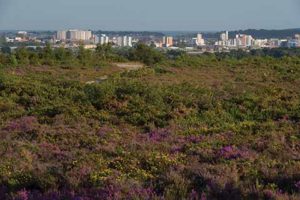
The halting of the eastern conurbation’s seemingly inexorable march westwards over rare heathlands was due to a combination of local conservation bodies. Credit – Mark Heighes
At sea I am less optimistic, but still hopeful that the new knowledge we have about fish stock management and marine protected areas will be applied. To do that, there has to be an understanding that nature conservation and sustainable fishing have similar aims and can work together.
Climate change may well be past the point of no return by 2068. I will be long gone, but we all need to work hard now in these next very few years to ensure we pass on a Dorset that is in a better state than we found it.
Dr Simon Cripps is Chief Executive of Dorset Wildlife Trust / Chair of the Dorset Local Nature Partnership
